Travelling around Namibia, I always appreciate the opportunity of getting to know Namibia’s beautiful people. I have over the years met members of all the ethnic groups that make up our marvellous Namibian tapestry. This time I headed south.
On my journeys I have been dazzled by the vivid colours of the Herero women’s regal long dresses. I have appreciated the bright colours of the Owambo traditional dress and those of the shebeens that colour the roadside of the North in all the shades on the artist’s palette. On my most recent trip I joined up with friend-photographer Lambert Heil and wordsmith Ron Swilling and ventured to the opposite end of the country, to the South, to explore the colourful world of the Nama. The cheerful colours of their houses and their rainbow-coloured laslappie trousers, dresses and hats brightened up the dusty streets of Mariental, Gibeon, Maltahöhe and the surrounding settlements.
It was more than the colour that brightened the trip, it was also the wide smiles and friendliness, and the joy of meeting the young, beaming with optimism, and the old whose faces tell of the many stories they’ve been part of on the meandering pathways of life.
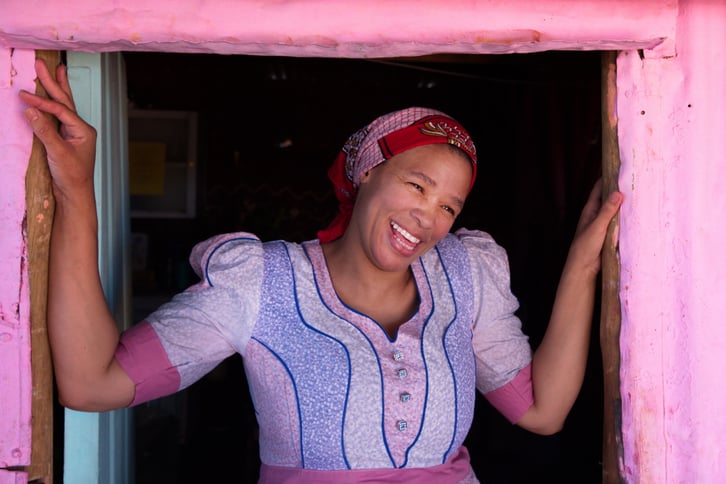

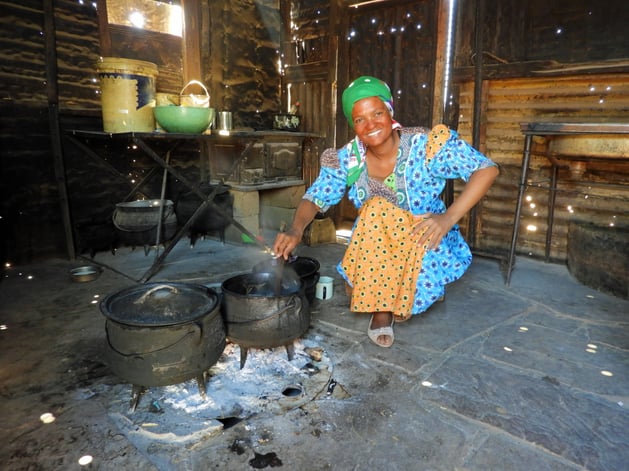
On our last day exploring the South we decided to venture further afield to Maltahöhe. On our way, we stopped to visit the ruins of the old house at Voigtsgrund, once a large agricultural farm.
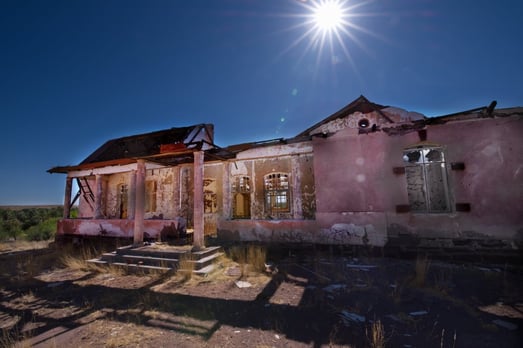
The interesting cone-shaped dwellings on the plot adjacent to the house caught our attention and when we went to investigate, we met Martha Narris, who was born on the farm and whose mother had once worked for the well-known Voigts family. When the farm was sold, she stayed on. “Dis my homeplek” (It’s my home place), she declared. On the opposite side of the road, where the acres of plantations once thrived, irrigated by an aqueduct, we met couple Drika Skrywer and Barmines Gariseb, who have made their home on the resettled land near the sprawling old barn.


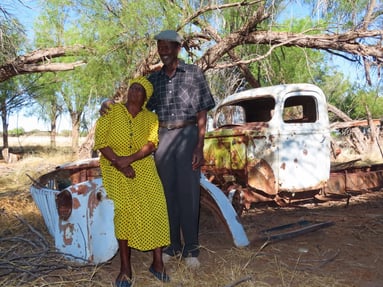
On the Uibes settlement, three generations of women from the Kinda family – Sophia, her mother Johanna and daughter Frieda – had their twin-tub washing machine hard at work in the yard and hung their colourful garments on the line to blow vigorously in the wind, like sails of boats destined for faraway lands.
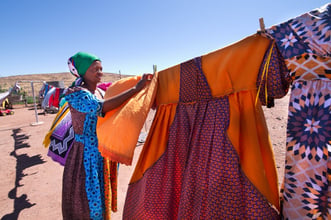
When we met 92-year-old Magrietha Byl and 75-year-old Magrietha Hanse, we couldn’t resist asking if we could take some photos. Their time-worn beauty beamed from their faces.

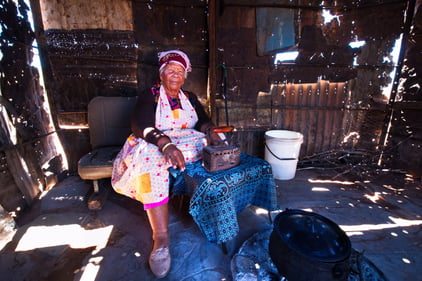
And when we found the stone-packed ruins of the Otto farm, dating back to last century, we also found Willem Moses Kalf and Anna Karöes and her dog Schweetie.
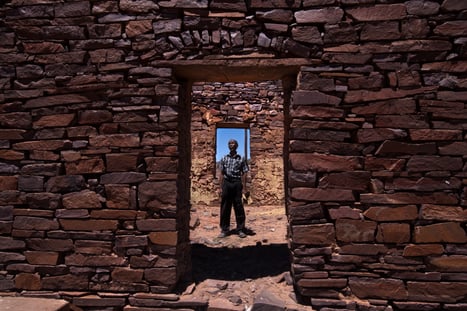
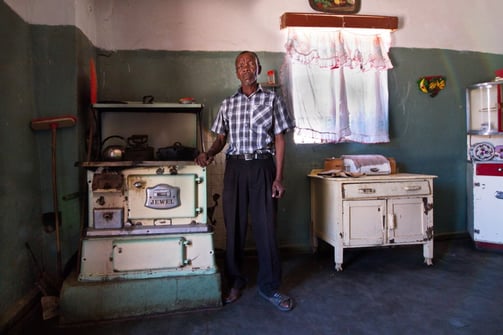
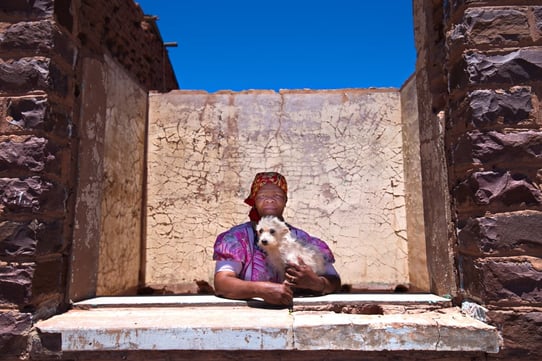
In Maltahöhe we noticed that many people were wearing multi-coloured fabric hats, made in the Nama laslappie (patchwork) tradition, and we bought one from a young man. The news travelled like wildfire through the streets and before long we had a stream of young men trailing after us offering the well-worn hats from their heads.
We found the shell of a fifty-year-old Volkswagen Karmann Ghia living out its retirement years in a dusty yard and met Lydia Kooitjie, who helped us capture a few memorable Maltahöhe moments.

At Hendrik Boois’s home, we admired his colourful laslappie hat, which he made himself, and his garden planted with mealies, pampoen and spinasie, brilliantly accentuated against the dry earth.
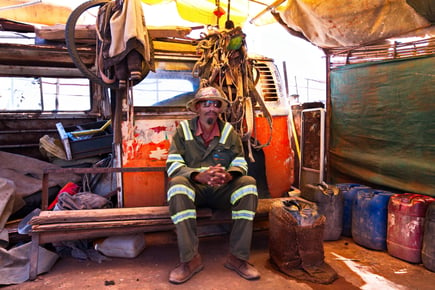
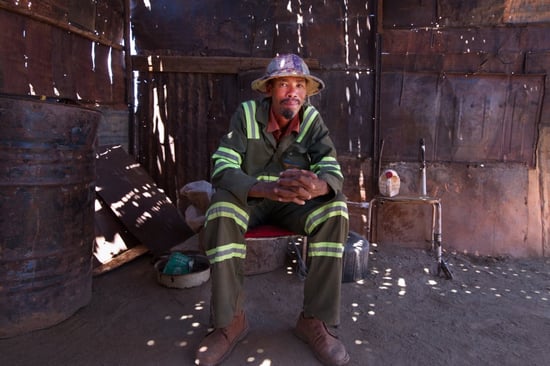
Colour won us over again at Dina Magrietha Harases’s pink house. She donned her matching pink dress, dazzling us with her assurance and beauty, and introduced us to her mother and daughter and three generations of love.
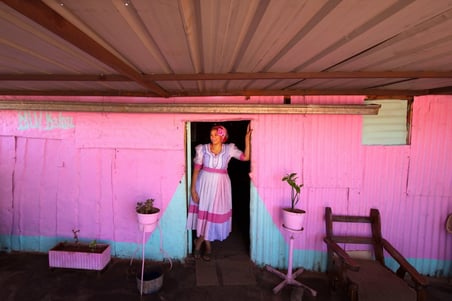
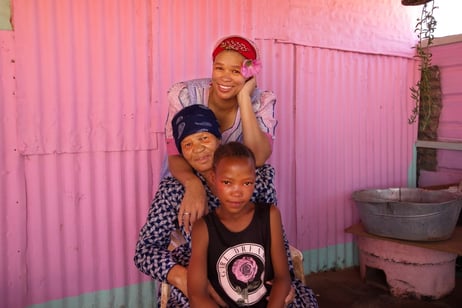
Driving past what looked like a traditional Nama beehive dwelling, we did a doubletake and reversed to get a better view. Instead of woven grass mats, it was innovatively constructed with pieces of corrugated sheeting nailed together. Silla Swartbooi showed us inside the metal hut, which is used as a kitchen. A fire was burning in the centre and an old Jewel stove stood to one side. Sunlight from the holes in the metal exterior streamed through the woodsmoke like rays of gold, transforming the simple kitchen into a cathedral of magic.
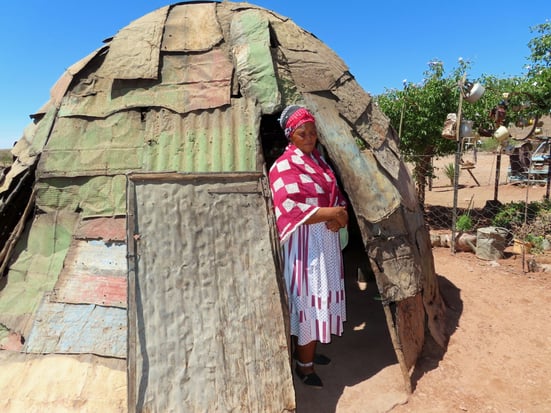
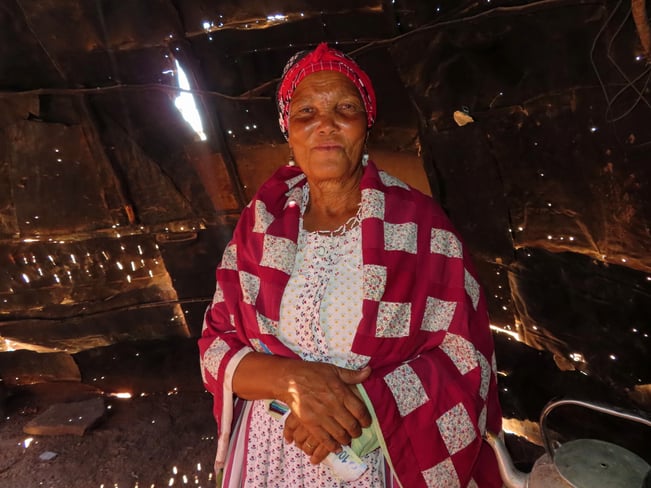

Our last stop for the day was to the local Agra to purchase some mealie meal, which we needed to drop off at the Voigtsgrund settlement on our way back. There we met Jaryn and her husband Boetie Niemand. The couple had owned the ‘Woestyn Kombuis’ (Desert Kitchen), which was a popular stop with travellers who pinned the position of their countries onto the world map on the wall. They told us that if we wanted stories, we must go and meet 85-year-old Willie Boshoff, who has a wealth of knowledge about the history of the area. But Jaryn warned, be prepared to be there for a long time as he is fond of telling his tales.
Excited to hear his stories, we drove to his house, but found no-one home. A neighbour told us that he had gone to Mariental for the day. “What car does he drive?” we asked. She answered: “A grey one”. As the sun began to descend in the sky, we made our way back onto the tar road to Mariental. Midway, we passed a grey car hurtling along in the opposite direction. It was none other than Oompie Willie. We did a quick U-turn and tried to gain on the grey Opel, which was moving like a horse heading for the stables at the end of a long day. A car chase ensued and we struggled to catch up even in our speedy vehicle. Eventually we caught up with Oom or, more appropriately, ‘Fast Oupa Willie’, overtook him and gestured for him to pull off the road. He and his travelling companion must have been wondering what they had done. When they emerged from their car, we introduced ourselves explaining that we were simply story-seekers looking forward to visiting him on another occasion to hear his stories. They laughed, glad to meet us and relieved that they weren’t in any trouble with the law.
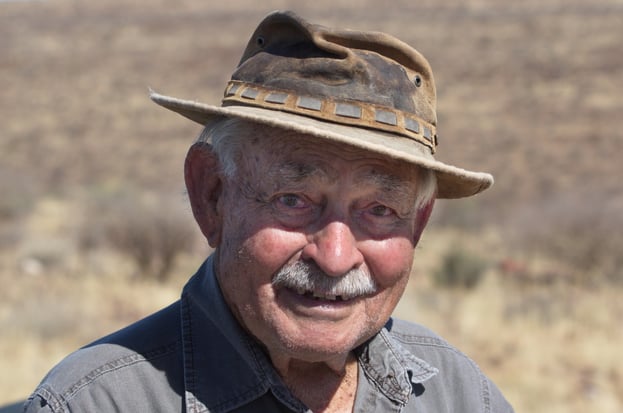
And so, one story led to another, and another, in a never-ending spiral of life stories, smiles and faces. And splashes of colour led us to meet a variety of interesting people, the many colours mingling, merging and weaving themselves elegantly together into the rich and fabulous patchwork quilt of the Namibian people.


.png)
.jpg)
.jpg)


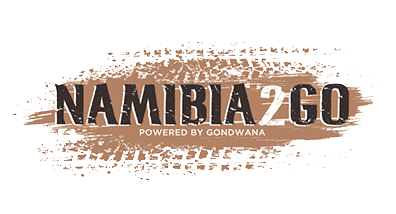

.png)

SUBMIT YOUR COMMENT